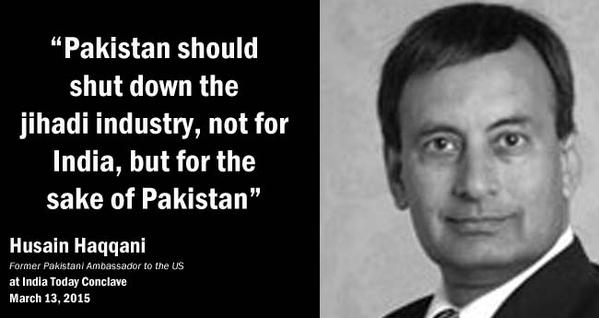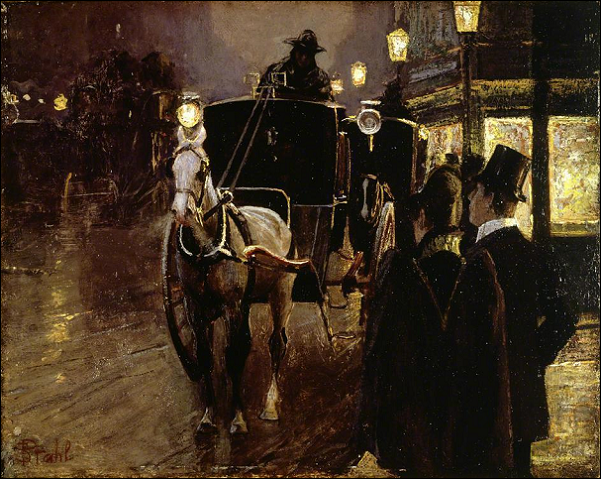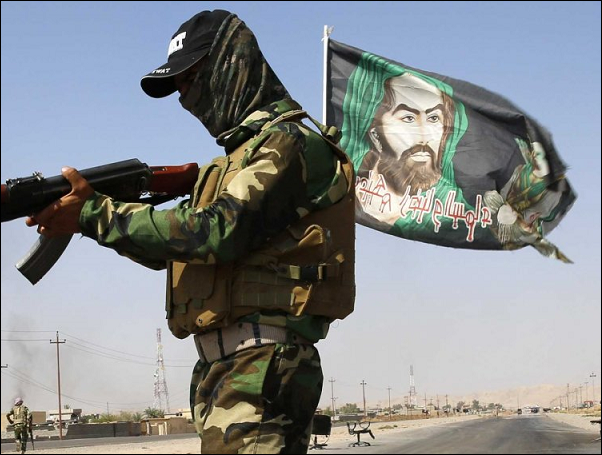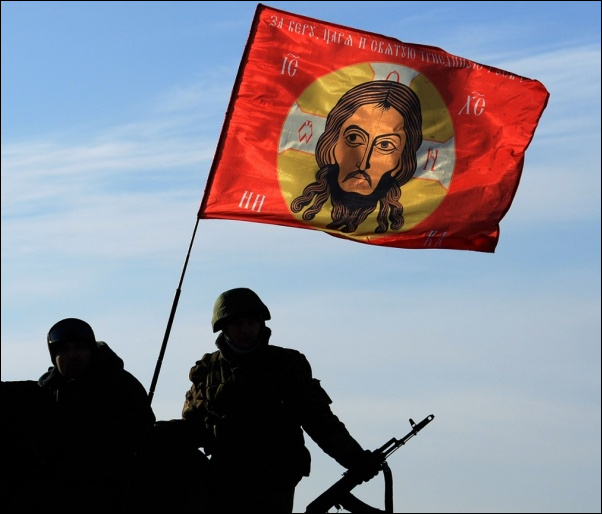[ by Charles Cameron — a highly recommended article on an often overlooked topic ]
.

**
Amb. Husain Haqqani has a new piece up on the Hudson Institute site, Prophecy & the Jihad in the Indian Subcontinent, which deals with the Ghazwa-e-Hind. I have quoted Haqqani before on this topic, since he is an eminently credible witness, unlike the propagandist Zaid Hamid.
Key intro para:
Radical Islamists invoke the Hadith (the oral traditions attributed to the Prophet Muhammad) to prophesize a great battle in India between true believers and unbelievers before the end-times. These references in the Hadith to the Ghazwa-e-Hind (Battle of India) infuse South Asia with importance as a battleground in the efforts to create an Islamic caliphate resembling the social order that existed at the time of the Prophet Muhammad and the Rightly Guided Caliphs (632-661 AD).
After discussing the Khorasan-to-Jerusalem and Euphrates-gold ahadith (the latter easily and often interpreted to refer to Middle Eastern oil, aka “black gold”), he turns to the Ghazwa traditions:
In one version of the Hadith, attributed to Thawban, a freed slave of the Prophet Muhammad, “[t]he Messenger of Allah said: ‘there are two groups of my Ummah whom Allah will free from the Fire: The group that invades India, and the group that will be with Isa bin Maryam, peace be upon him.’”4 Isa bin Maryam is the Quranic name of Jesus, whose return to earth alongside the Mahdi is held in Islamic tradition to be a seminal event of the end of time.
In another version, narrated by Abu Hurairah, “[t]he Messenger of Allah promised us that we would invade India. If I live to see that, I will sacrifice myself and my wealth. If I am killed, I will be one of the best of the martyrs, and if I come back, I will be Abu Hurairah Al-Muharrar.” Al-Muharrar translates as “the one freed from the fire of hell.”
We hear relatively little about the Ghazwa-e-Hind narrative in the west, so Haqqani then offers some recent historical context:
Just as the prophecies of Khurasan became popular during the wars in Afghanistan, the Ghazwa-e-Hind divinations became a staple of the Islamist discourse after the launch of jihad in Indian-controlled parts of Kashmir in 1989. Throughout the 1990s, Pakistani official media also encouraged discussion of the Ghazwa-e-Hind Hadith to motivate jihadists. In fact, every major Pakistan-based jihadi group that launched terrorist attacks across the border claimed that their operations were part of the Battle for India promised by the Prophet. For these Pakistani groups, supported by Pakistan’s Inter-Services Intelligence agency, the target of jihad should be the modern state of India and its “occupation” of Kashmir.
**
This next para gave me pause and insight, quoting as it does a Deobandi source:
According to Maulana Waris Mazhari of the Darul Uloom Deoband seminary in Uttar Pradesh, India, the conflict between India and Pakistan over Kashmir was not jihad; the dream of establishing “Muslim hegemony throughout the entire world” was fanciful. “The term ghalba-e Islam, the establishment of the supremacy of Islam, used in the context of the Quran and the sayings of the Prophet (Hadith), refers not to any political project of Muslim domination,” Mazhari wrote, “but, rather, to the establishment of the superiority of Islam’s ideological and spiritual message.”
Haqqani then goes into considerably more detail on Mazhari‘s views, saying for instance:
Mazhari saw the Ghazwa-e-Hind Hadith as an instrument of propaganda in “the proxy war engaged in by Kashmir by powerful forces in Pakistan in the guise of a so-called Jihad,” which he and other Ulema consider “nothing but deceit.”
**
Haqqani next turns to the various contemporary jihadist interpretations of the Ghazwa, starting with the shifts occasioned by the defeat of the Taliban and the death of Osama bin Laden:
The defeat of the Taliban and the arrival of NATO forces in Afghanistan in 2001 shifted al-Qaeda’s major operations to Iraq and Yemen even though Osama bin Laden continued to hide in Pakistan. For some time, discussion of the epic battle for India diminished in the jihadi discourse while grand strategies for the expulsion of Western influence from the Middle East took center stage. The death of Osama bin Laden and the rise of ISIS, however, have revived global jihadist interest in Ghazwa-e-Hind.
and:
The recent revival of interest in the Ghazwa-e-Hind prophecy reflects rivalry between competing jihadi groups. Al-Qaeda, now led by Ayman al-Zawahiri, faces the prospect of extinction as its Arab cadres defect to ISIS, led by Baghdadi. Zawahiri has worked to build alliances with Pakistani jihadi groups and make inroads in India’s Muslim population because it helps him remain relevant in the face of ISIS.
As to that rivalry between AQ and IS, Haqqani concludes his piece:
Al-Qaeda appears to be attempting to maintain support among radical Islamists in the subcontinent by directing its ire at India. Its leaders have been active in Afghanistan and Pakistan since the 1980s anti-Soviet jihad and maintain close ties to the Pakistani-supported Afghan Taliban and Kashmiri jihadi groups. By focusing on India, al-Qaeda hopes to retain the support of Pakistan-backed groups, which interpret the Ghazwa-e-Hind Hadith to mean re-conquest of Hindu India without hitting Muslim Pakistan. Even in Zawahiri’s statement about AQIS, Pakistan was mentioned only as a country that needed to be brought under full Sharia rule while Hindu India was portrayed as the enemy of Islam.
ISIS, on the other hand, has accepted the allegiance of groups that are violently opposed to both the Republic of India and the Islamic Republic of Pakistan. ISIS affiliates appear to have opted for the alternative interpretation of Ghazwa-e-Hind, offered by groups such as the TTP, to pursue jihad in all parts of historic Hind. Indeed, in an ominous declaration, one South Asian ISIS member proclaimed, “[o]ur struggle is ongoing and Insha’Allah after defeating Pakistan Army, we won’t just stop in Pakistan rather we shall continue our advance into Kashmir and India until the laws of Allah are implemented globally and the whole world comes under the rule of one Muslim Khalifah.”
All in all, this is a fascinating and timely article, and I highly recommended it as a counterpoise to our usual concern with westward-facing jihad.








